
HISTORICAL
MISSING “VIYELLA FLANNEL”
March – 2023 10 MINS READ
First Fabric Blend of Wool and Cotton
The fabric we currently call “Viyella” is not real “Viyella”.
“Viyella” is a blend of wool and cotton first woven in 1893 in England,and soon to be the “first branded fabric in the world”.
It was made of 55 % Lambs wool and 45 % Egyptian cotton in a twill weave,developed by James and Robert Sissons of William Hollins & Co, spinners and hosiers.
Viyella is a blend of wool and cotton first woven in 1893 in England, and the “first branded fabric in the world”. It was made of 55% Lamb’s (later Melino) wool and 45% Egyptian cotton in a twill weave, developed by James and Robert Sissons of William Hollins & Co, spinners and hosiers. The name Viyella is based on the unusually-named valley road, Via Gellia, (the A5012) near Matlock, Derbyshire. The brand name, first registered as a trademark in 1894, and registered in the United States in 1907.
soon covered not only the original fabric, to be sold by the yard (piece goods), but also clothing. At first this was made by separate businesses, but it was not long before Hollins started producing their own clothes and offering franchises to manufacturers who would use the Viyella label. Following increasing emphasis on garment manufacture over the years, Viyella is now a fashion brand for clothes and home furnishings made of a variety of fabrics. The original wool/cotton blend is no longer sold.

1897 BLACK AND WHITE PRINT AD FOR VIYELLA CLOTHING, A PRODUCT LINE BY ABERFOYLE MANUFACTURING COMPANY.
WILLIAM HOLLINS & CO,
Hollins had started business in 1784 in Pleasley, about 20 miles away on the Derbyshire/Nottinghamshire border. Later their offices were at Viyella House in Nottingham. 1890 Hollins and Co acquired a mill used for the early production of Viyella. After “Viyella” was a blend of wool and cotton first woven in 1893. It was made of 55 per cent lambs wool and 45 per cent cotton in a twill weave, developed by James and Robert Sissons of William Hollins and Company, spinners and hosiers. It was the “first branded fabric in the world”.
The brand name, first registered as a trademark in 1894, soon covered not only the original fabric, to be sold by the yard (piece goods), but also clothing.
At first this was made by a separate business but it was not long before Hollins started producing their own clothes and offering franchises to manufacturers who would use the Viyella label.The trademark was registered in the USA in 1907.
and 1908 Company re-registered.In 1914 Listed as spinners and manufacturers of “Vyella” and “Aza” cloths and spinners of hosiery and other yarns.
1947 British Industries Fair Advert: Viyella for Men, Women and Children everywhere. Spinners and Manufacturers of “Viyella” and “Clydella” Fabrics, Women’s Underwear and Nightwear, Men’s Shirts, Pyjamas and Hosiery; Nursery “Viyella” and Clydella Children’s Wear. (Textiles Section – Earls Court, Ground Floor, Stand No. 238
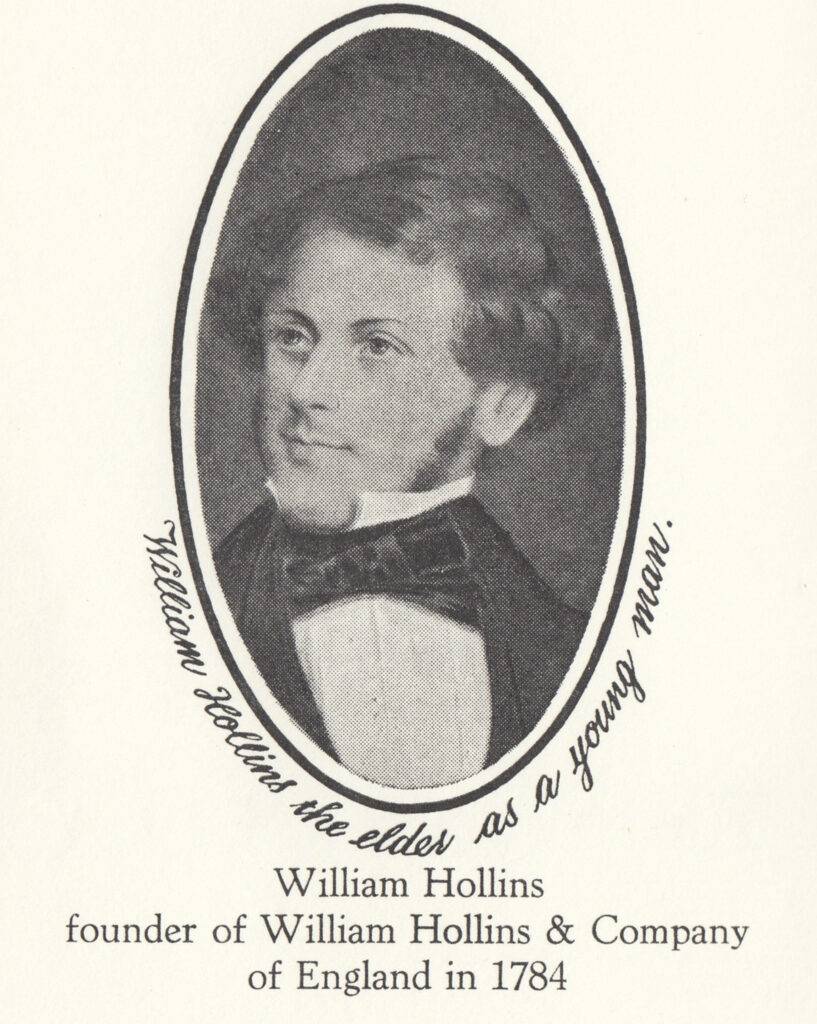

1897 BLACK AND WHITE PRINT AD FOR VIYELLA CLOTHING, A PRODUCT LINE BY ABERFOYLE MANUFACTURING COMPANY.
After a merger in 1961, Hollins became Viyella International, led by Joe Hyman, who in the next few years acquired a series of related companies, with Viyella growing to be one of the biggest textile businesses in the UK, owning 40 factories across the country. After a few years as Carrington Viyella and then Vantona Viyella, the company owning the brand became Coats Viyella (Coats Paton, now Coats Group plc), who in the 1980s built a new mill to produce Viyella cloth in Barrowford, Lancashire, but this was demolished in 1999.


Pleasley Mills, Pleasley Vale, Nottinghamshire

William Hollins & Co Ltd. / Viyella – Radford Mill
View from Garden Str
William Hollins & Co. Ltd. purchased this site in 1890 and established a spinning mill in pre-existing buildings in its middle section. They extended the mill in the 1890’s towards the Denman Street end and further extended it towards the Ilkeston Road end in the 1900’s
What remains here today is the last development. The older two sections were recently demolished and modern housing is presently being built in their place

1950s William Hollins and Co Ltd, Castle Boulevard
Opposite the bottom end of Castle Road. William Hollins & Co Ltd began in 1784 at the Pleasley Vale, the factory there became the first establishment in the world to take in raw cloth material at one end of the factory and sent out the garment, ready for sale, at the other end. The company expanded in the area, producing garments with the Viyella, Clydella and Davella labels. The building seen here is believed to be one of the first factories built in the ‘Art Deco’ style. It is a listed building. They won large contracts from the government to provide cloth during the Second World War.
In the 21st century much of Coats manufacturing (now specialising in thread) has been moved abroad to far east countries and it is no longer possible to buy Viyella fabric in the UK. Coats underwent major restructuring in 2002 and sold off its Viyella fashion retail business (and Jaeger) to entrepreneur Richard Thompson in 2003 for £1, who re-sold Viyella weeks later to venture capitalist Harris Watson. Viyella Ladieswear has since added home furnishings to its range of goods. The fashion chain entered Administration on 7 January 2009 citing “an assessment of the current economic situation and the prospects for the future” as the cause.


VIYELLA
Viyella was a soft lightweight fabric that was more resistant to shrinkage than any comparable pure wool alternative (for example, challis wool is a lightweight woven fabric, originally a silk and wool blend.). In its early years it was marketed as a fabric which combined lightness and fashion with warmth and durability. One 1920s advertisement called it a “guaranteed unshrinkable fine wool flannel” for women who wanted both “daintiness” and “protectiveness”.By the early 20th century it came in various weights and widths, some rather narrow by today’s standards, and in both plain colours and woven or printed patterns, and was exported from the United Kingdom to other English-speaking countries. Towards the end of the 20th century it was woven in 150 cm (59 in) wide lengths suitable for modern garment design and production.

VINTAGE VIYELLA FABRIC MADE IN UK

Viyella Industry clothing retailer Founded 1893 Headquarters England Key people James Sissons Robert Sissons Products clothes home furnishings The first ready-made garments using Viyella were shirts and nightgowns, and soon came dresses, slips and other clothing, much of it produced under franchise arrangements using the Viyella trademark. It was also made into sheets, and at one time Viyella yarn was available for home knitting.
1930s FILM “THE STORY OF VIYELLA”
In the mid-20th century the fabric was popular for children’s clothes, and babies’ nightgowns to winter shirts for British schoolchildren, and for pajamas, dress shirts and ladies dresses; it became associated with sensible, cosy clothing. Officers in the British and other Commonwealth armies purchased their own uniforms during the World War 2 , and Viyella shirts were a desirable option. In the late 20th century it was ‘re-invented’ as fashionable fabric. In 1987 The Times said it was used by designers interested in “vintage” style, like some designer , Laura Ashley, and creators of “modern classics”. Clydella was a cheaper, less soft alternative made with 81 percent cotton, produced at factories in the Clydeside area, including Glasgow and Hamilton, where Viyella was also woven. Hollins also produced the related Dayella cloth used especially for babies’ clothes.
1900s ~ 1960s “VIELLA” Advertisement Collections

1901 VIYELLA HIGH CLASS MATERIAL SHIRTS
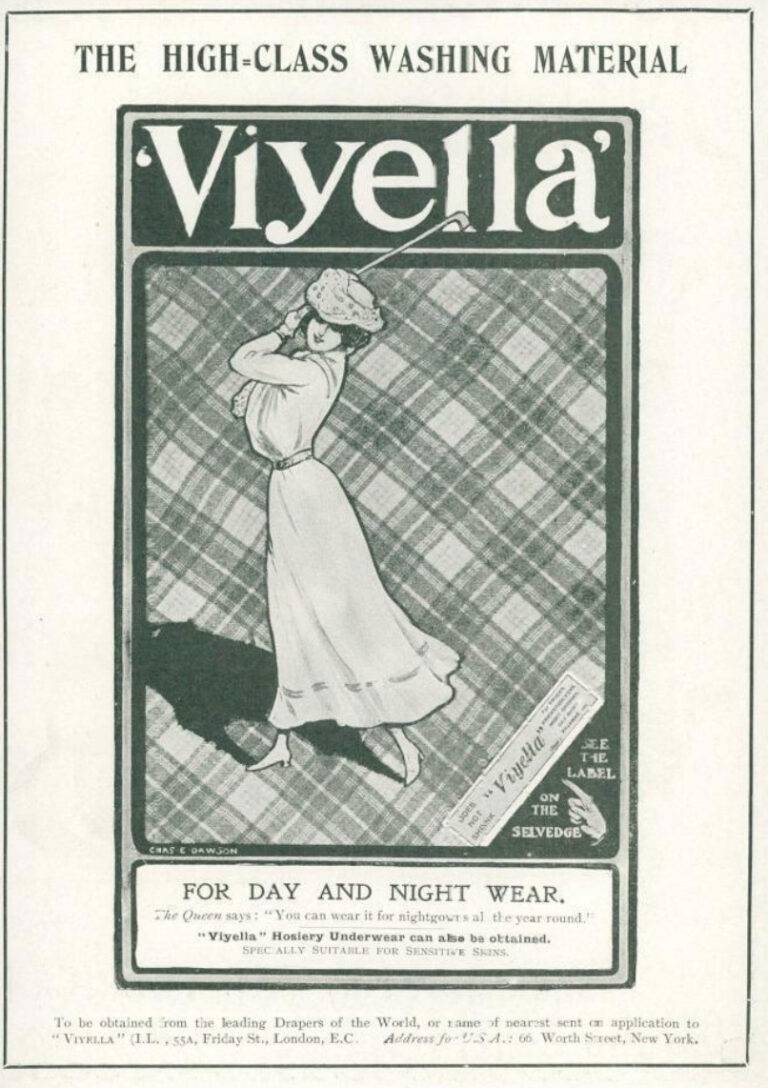
1901 VIYELLA HIGH CLASS GOLF CLUB MATERIAL

1901 OFFICIAL GAZETTE OF THE UNITED STATES PATENT OFFICE.
“Fancy Flannels”.The Clothier and furnisher. v. 63 (Aug. 1903-Jan. 1904).
We have received sample books of what are called Viyella flannels, guaranteed to be absolutely unshrinkable. We have always thought that wool, especially all-wool, must shrink, but kindly tell us what the word “Viyella” means? We cannot say whether or not the Viyella cloth is unshrinkable. It belongs to the order of fancy flannels and is used for shirtings and dress purposes. All the flannels we know of are made with cotton warps, the reason for which is obvious to those knowing anything about weaving, and all the flannels we ever knew of shrank in the width–the wool being the cross (weft) threads of the fabric. “Viyella” is a coined word adopted by the English house that introduced that particular make of cloth.
We have received sample books of what are called Viyella flannels, guaranteed to be absolutely unshrinkable. We have always thought that wool, especially all-wool, must shrink, but kindly tell us what the word “Viyella” means? We cannot say whether or not the Viyella cloth is unshrinkable. It belongs to the order of fancy flannels and is used for shirtings and dress purposes. All the flannels we know of are made with cotton warps, the reason for which is obvious to those knowing anything about weaving, and all the flannels we ever knew of shrank in the width–the wool being the cross (weft) threads of the fabric. “Viyella” is a coined word adopted by the English house that introduced that particular make of cloth.

1905 ILLUSTRATED SPORTING NEWS
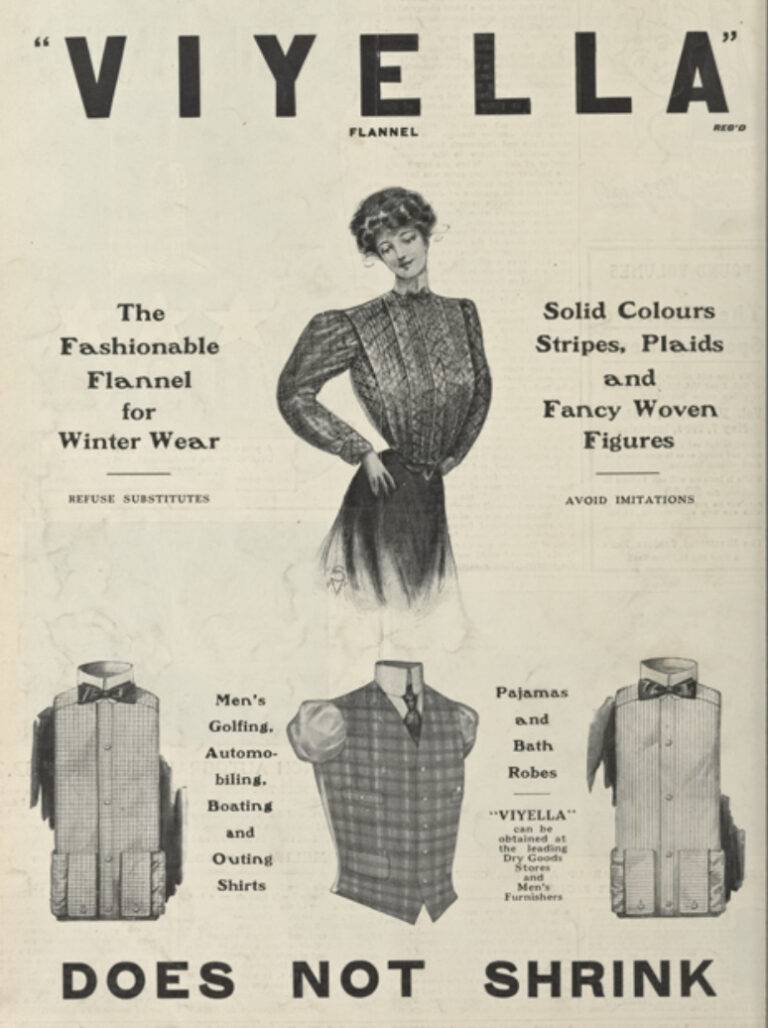
1905 ILLUSTRATED SPORTING NEWS

1905 ILLUSTRATED SPORTING NEWS
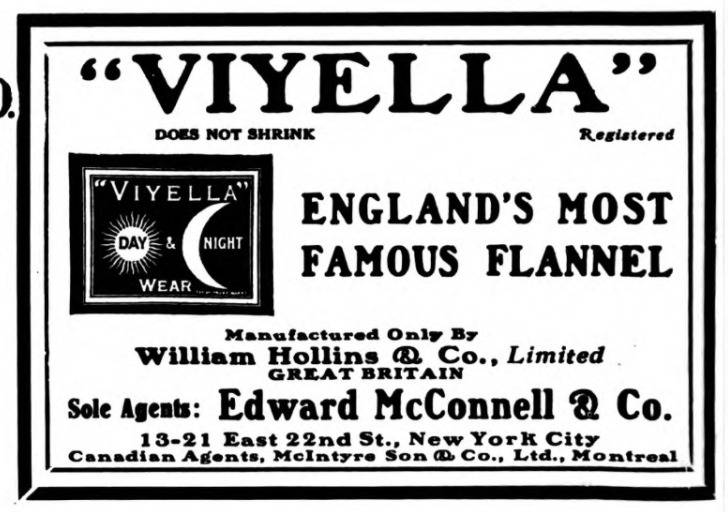
1909 DRY GOODS ECONOMIST. V.63

1915 DRY GOODS ECONOMIST. V.69
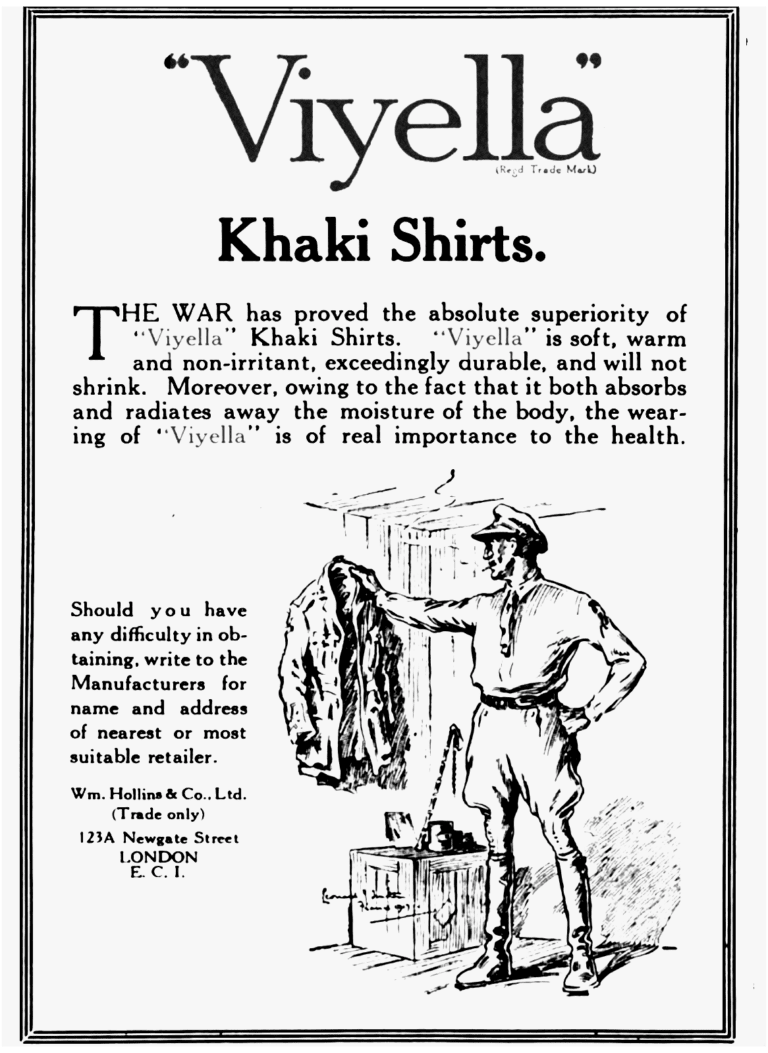
1917 Town & country
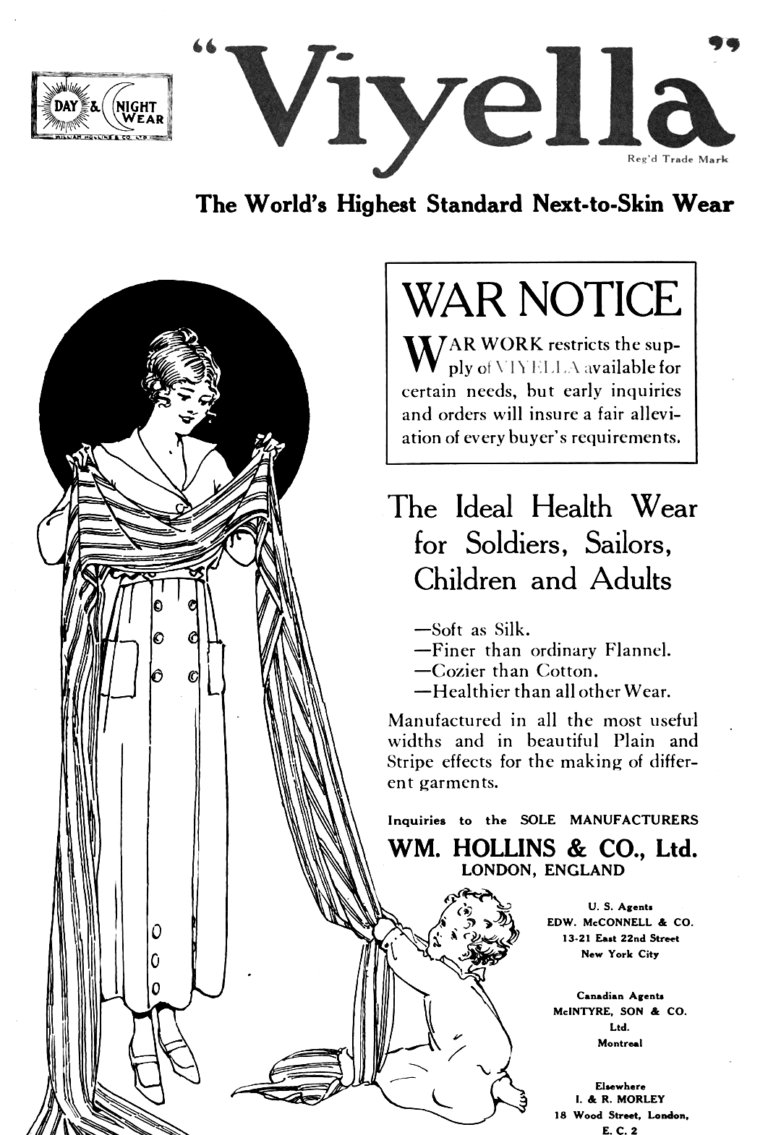
1918 Dry goods economist v.72

1918 Dry goods economist v.72

1918 VIYELLA

1919 VIYELLA
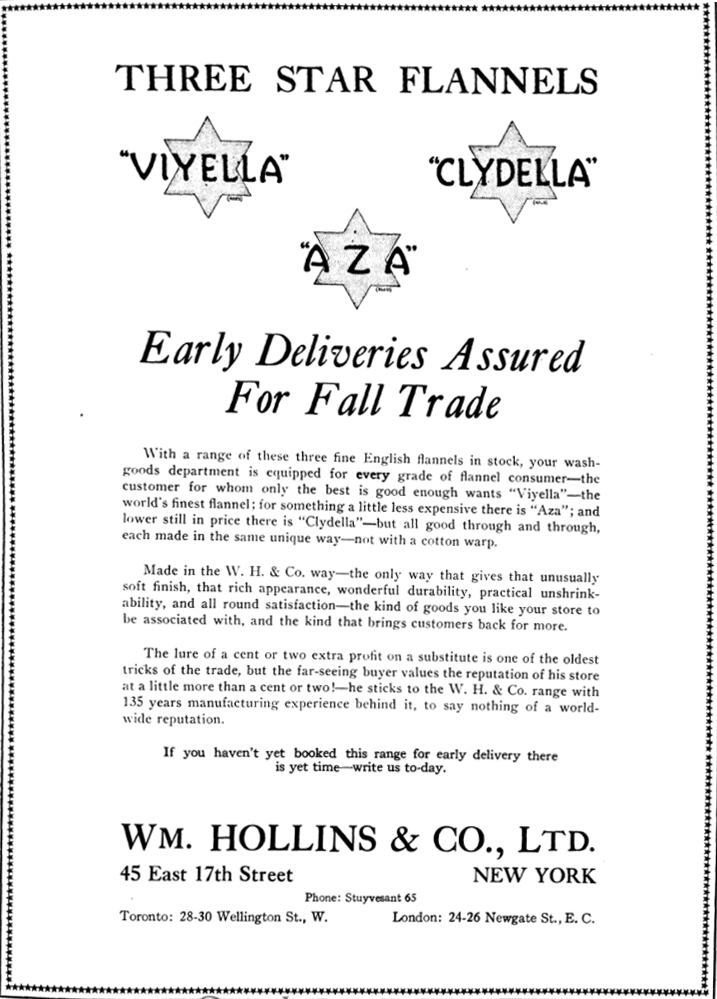
1919 DRY GOODS ECONOMIST. V.73
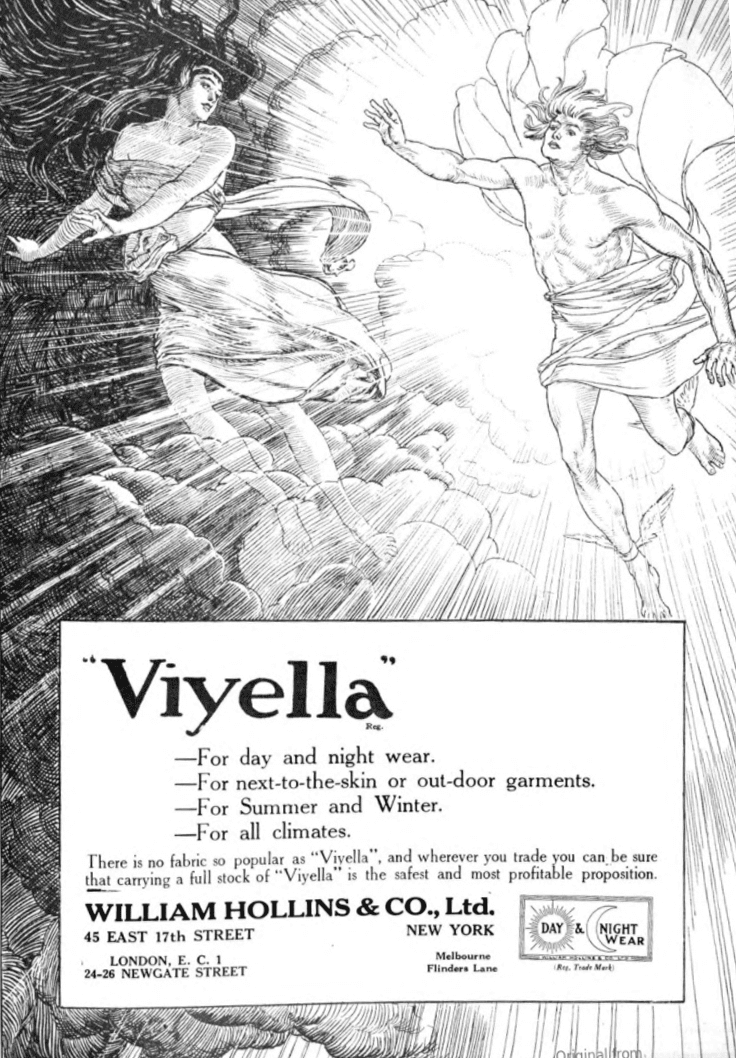
1919 DRY GOODS ECONOMIST. V.73

1919 COUNTRY LIFE
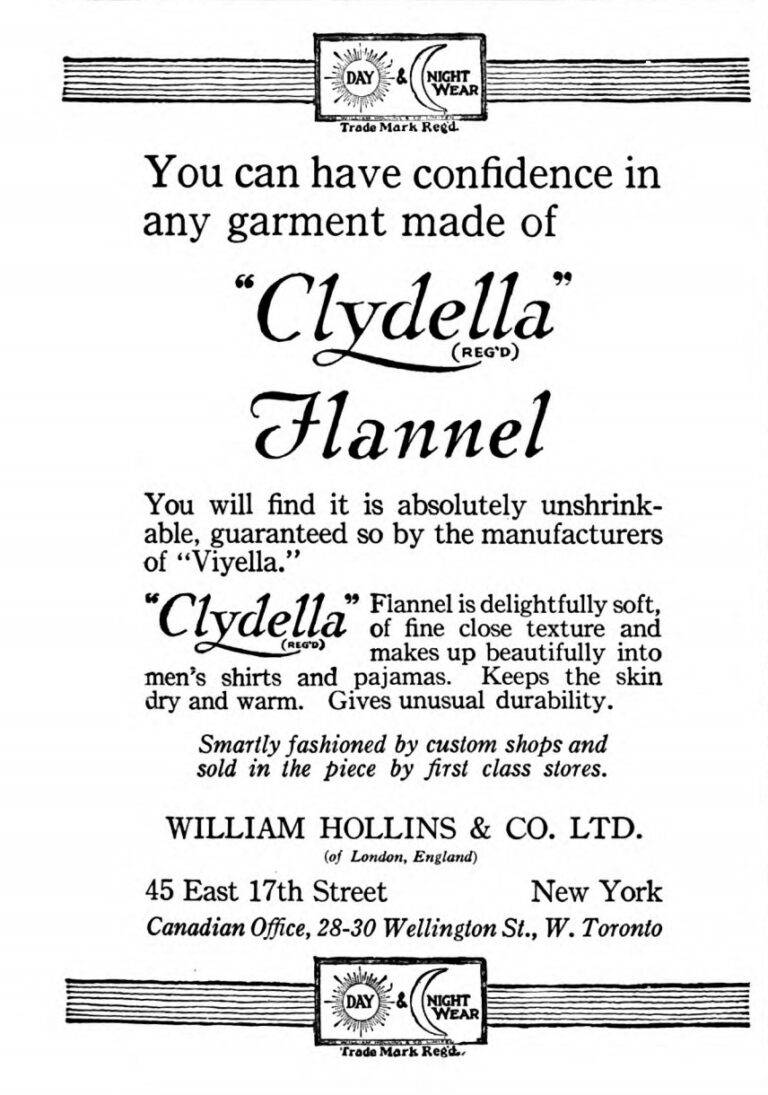
1919 COUNTRY LIFE

1920 THE LITERARY DIGEST FOR FEB.
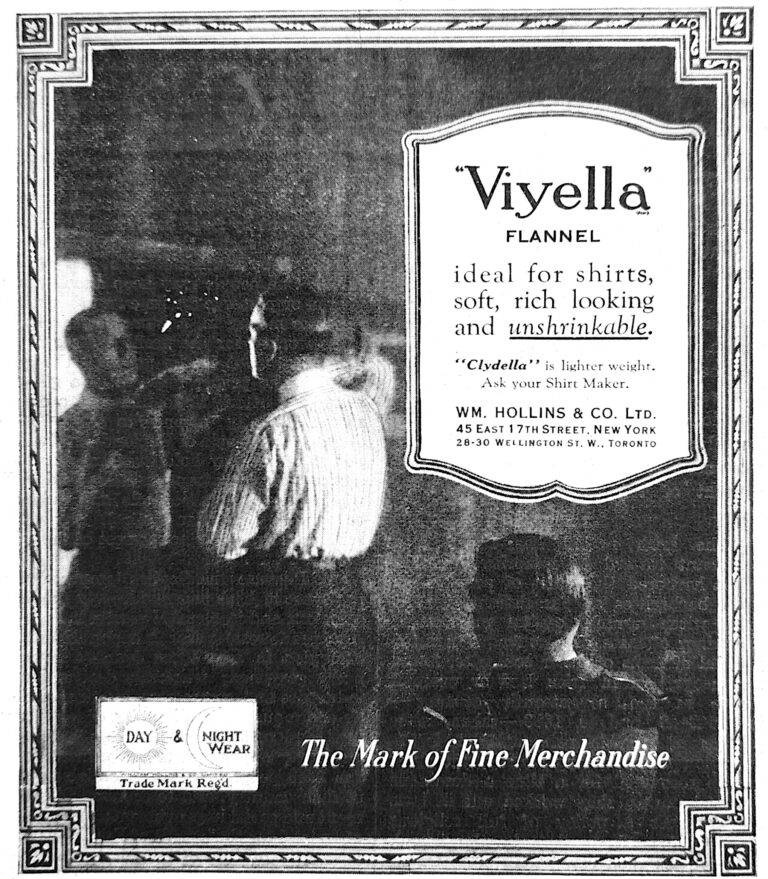
1920 THE LITERARY DIGEST FOR FEB.

1919 CLYDeLLA FLANNEL & VIYELLA

1920 DRY GOODS ECONOMIST
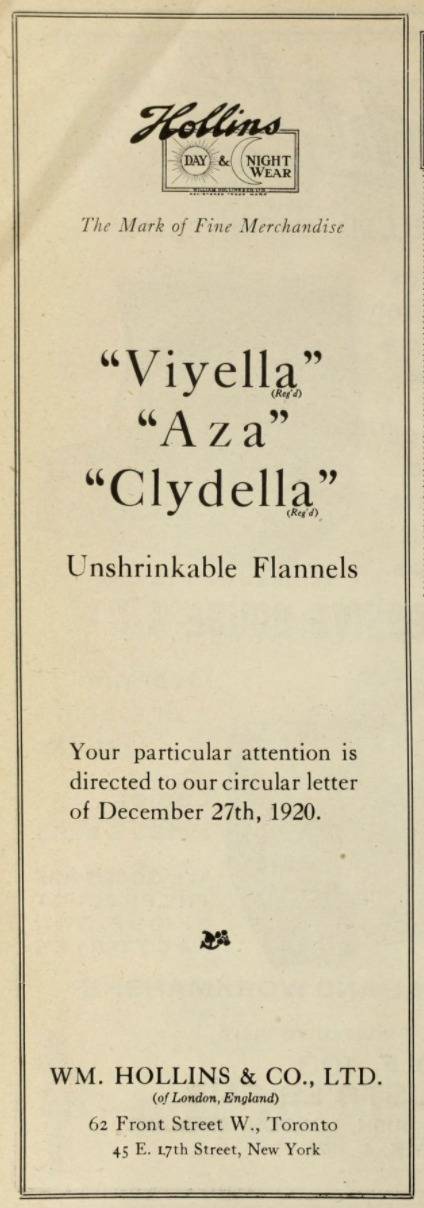
MEN’S WEAR OF CANADA 1921
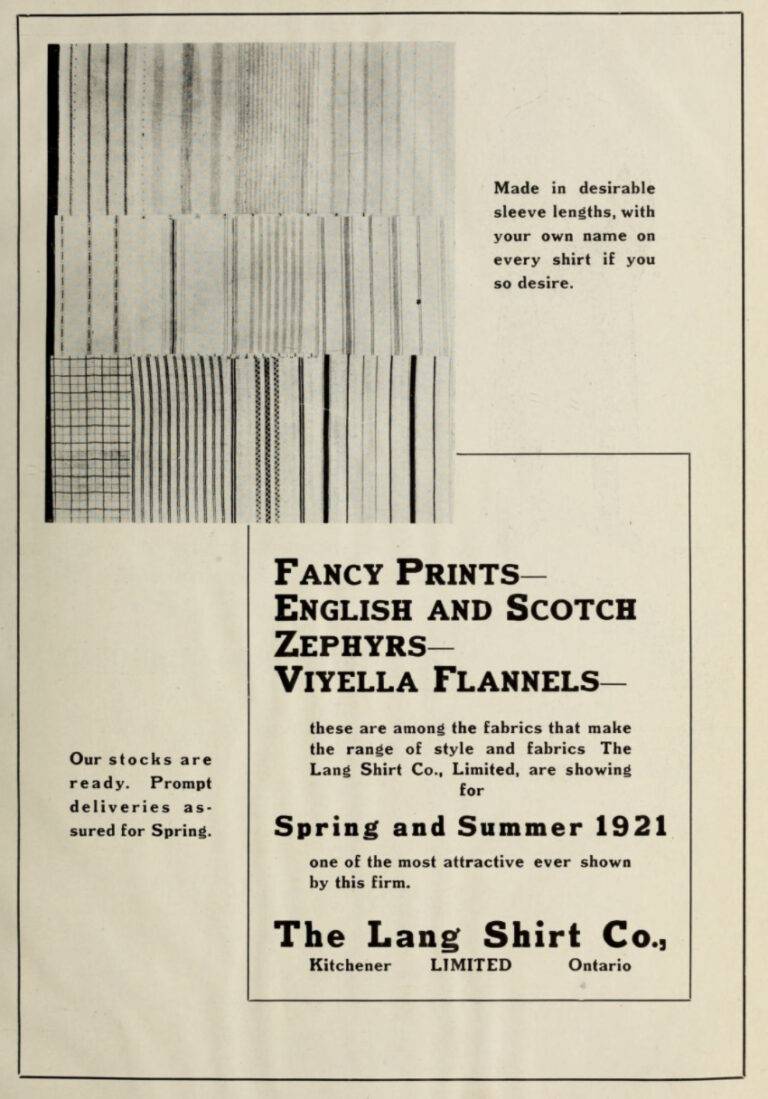
MEN’S WEAR OF CANADA (JANUARY-DECEMBER 1921)

1922 VIYELLA

1922 VIYELLA

1922 VANITY FAIR. V.17 NO.5-V.19 NO.4

1922 VANITY FAIR

1922 VANITY FAIR
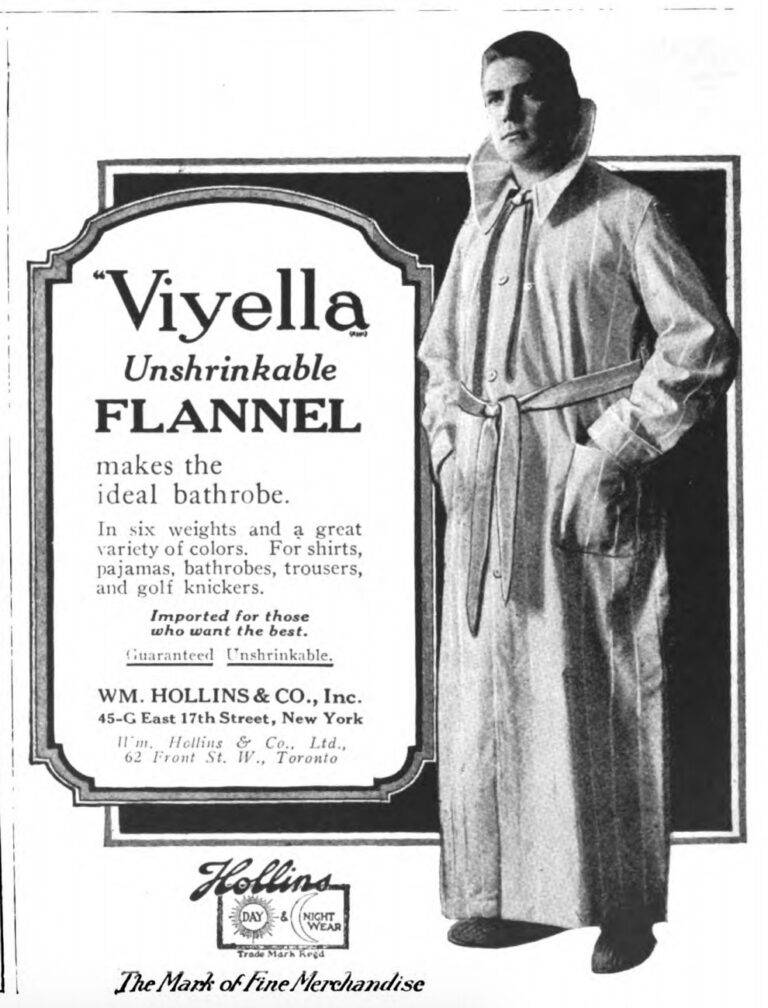
1922 VANITY FAIR

1927 VIYELLA CLYDELLA SELAYNE

1928 VIYELLA TENNIS SOCKS
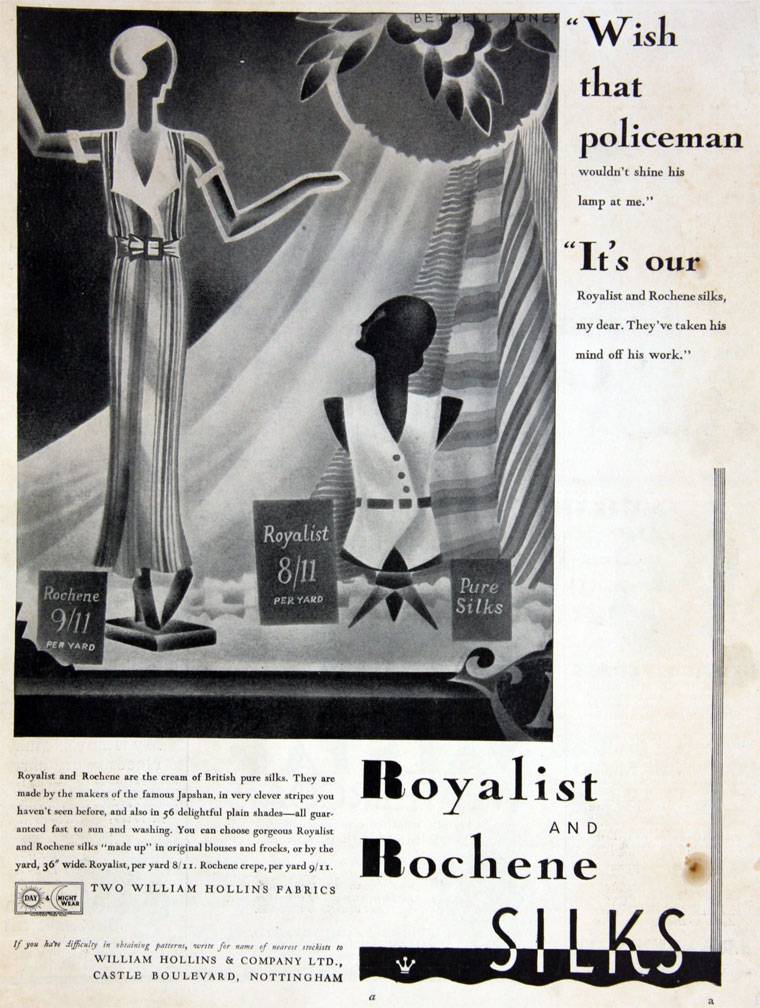
1932

1938 VIYELLA Men’s Sports Shirts

1940 Viyella Khaki Shirts

1941 advertisement for Viyella fabric
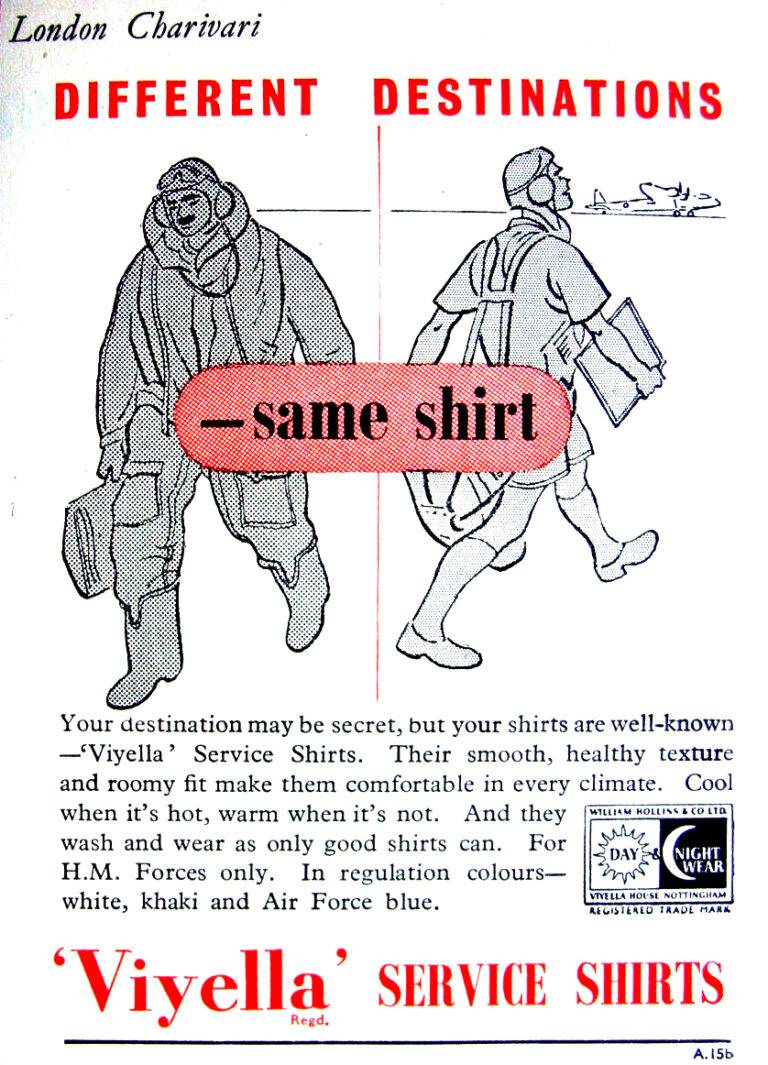
1943 ‘VIYELLA’ WW2 Military Service Shirts
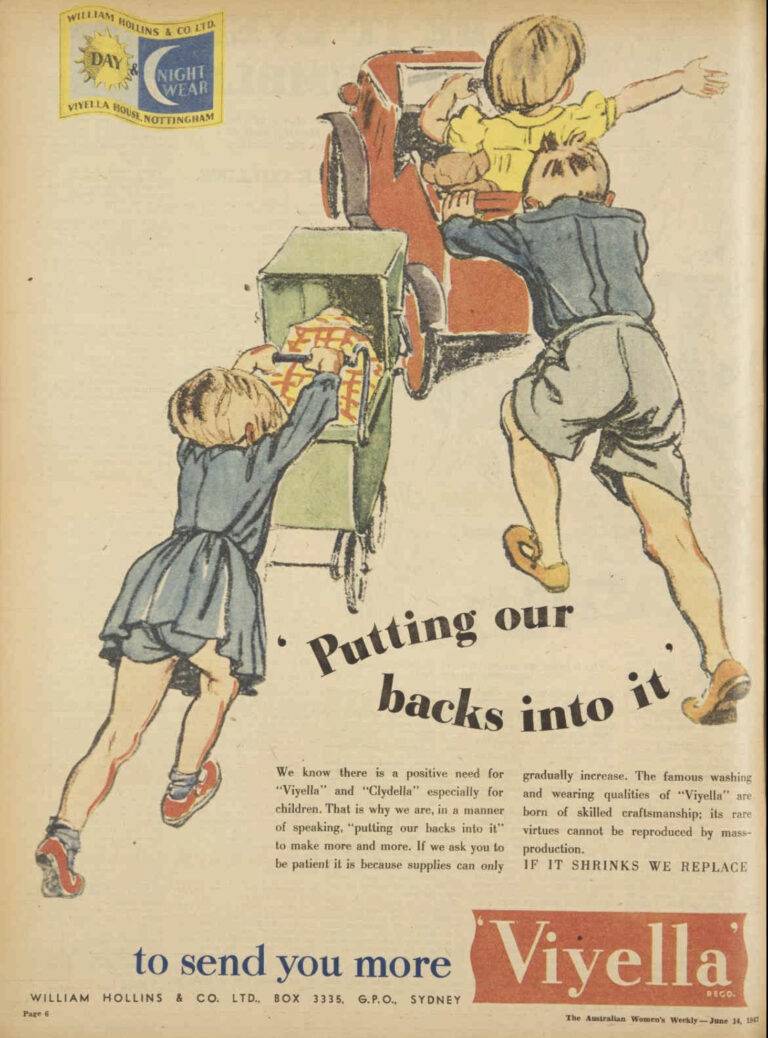
1947 advertisement for Viyella fabric

1948 advertisement for Viyella fabrics

1949 Viyella Shirt

1952 Viyella Shirt

1950 Viyella Socks

1952 Viyella Socks

1958 Viyella Socks

1965 Simpson Viyella Shirts
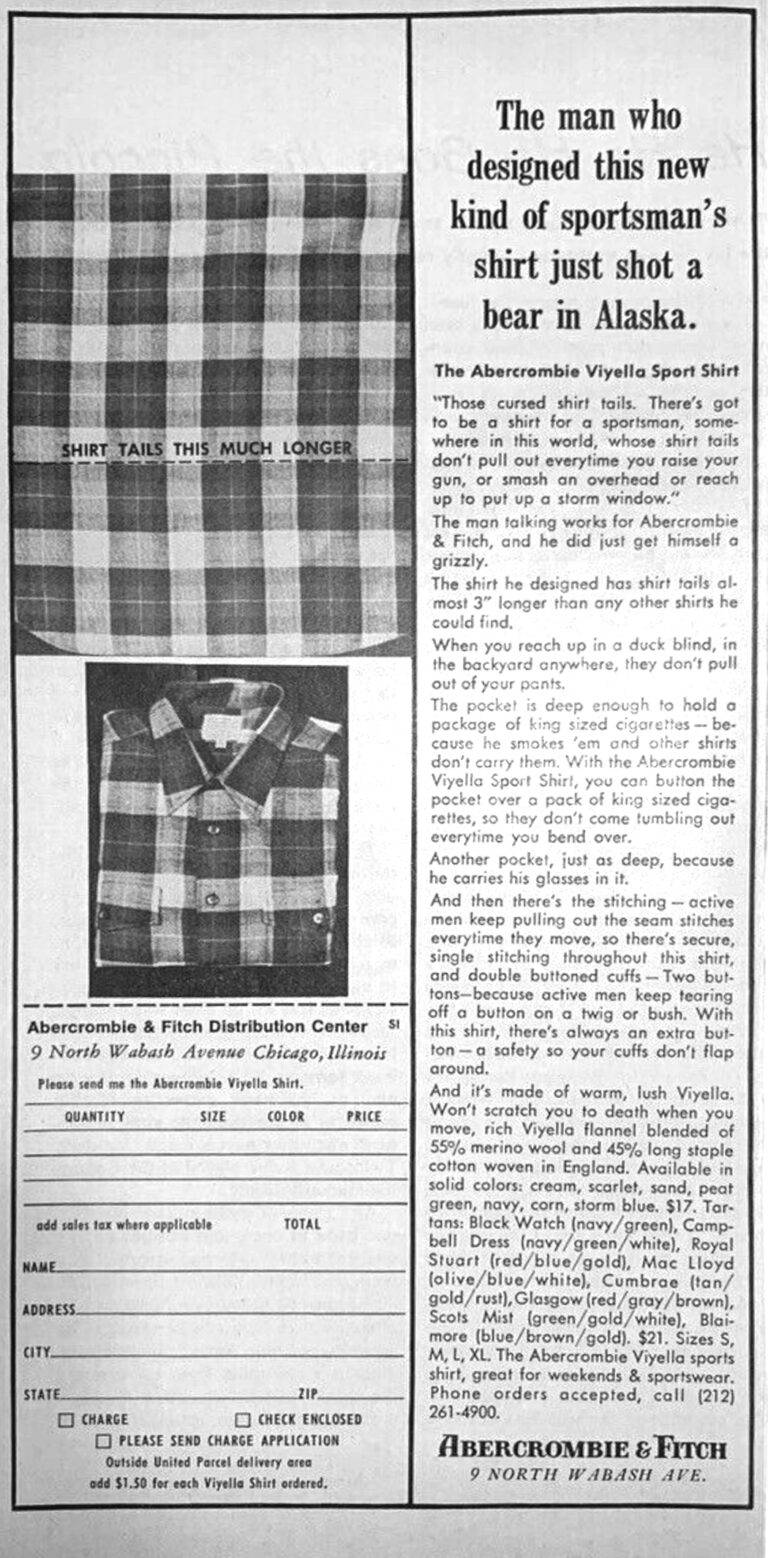
1968 Abercrombie & Fitch Viyella Sport Shirt Wool Flannel
Nowadays, even wool-cotton blends are no longer used,and Viyella is just only brand name It was a really good material until the days of British fabrics and Canadian licences. It’s inevitable that things change with time, but I miss it a lot. Will we ever see real Viyella wool 55% x cotton 45% again?
